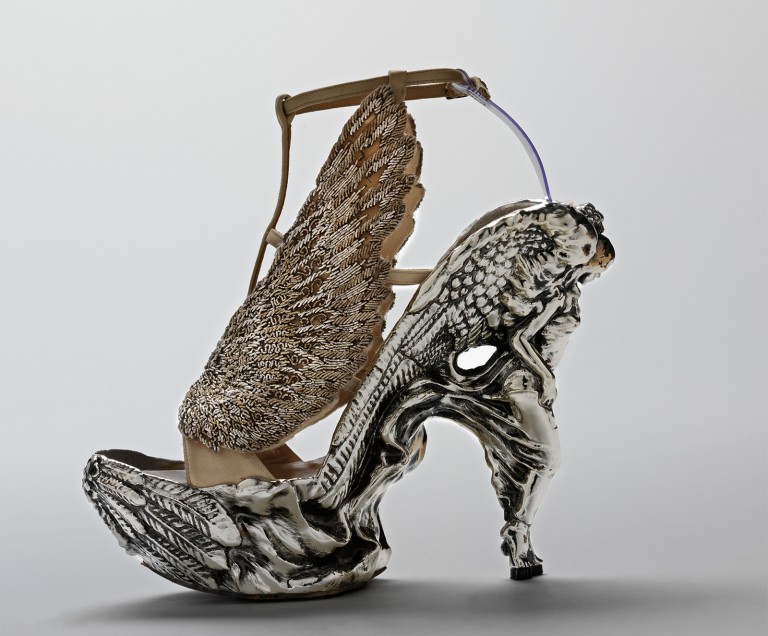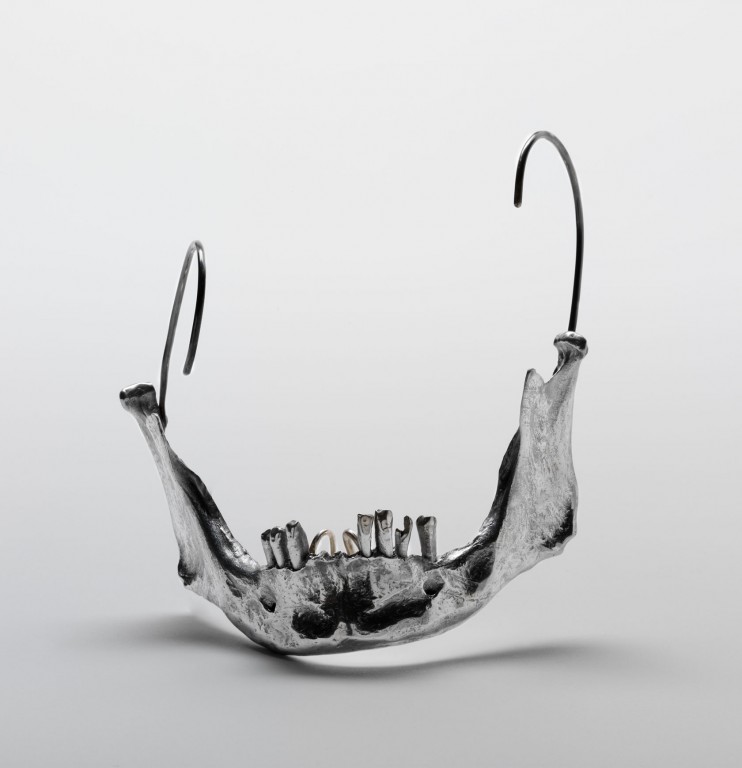ENCYCLOPEDIA OF
COLLECTIONS:
THE GIRL WHO LIVED IN THE TREE
McQueen’s Autumn/Winter 2008 collection centred on a fairytale narrative devised by McQueen about a girl who descends from a tree to marry a prince and then become a queen. It was inspired by a 600-year-old elm tree in the garden of the designer’s Sussex home. At the centre of the set stood a giant tree swathed in fabric, inspired by Bulgarian artist Christo, who is renowned for wrapping buildings with material.
The collection notes listed the inspirations to be ‘The British Empire, Queens of England, the Duke of Wellington. Toy soldiers and punk princesses.’ These themes found expression in two distinct sequences. The first featured romantic designs with a predominantly slender silhouette that was emphasized by jackets with nipped-in waists and S-bend corseted tops above ballerina skirts. Here emerged McQueen’s punk princess to the orchestral soundtrack of American grunge band Nirvana’s ‘Come As You Are’, styled with unruly back-combed hair and dressed in rags, hand-knitted mohair and washed tweeds. The dark palette was lifted in places with striking decorative touches. While some designs were
scattered with intricate snowflakes, another was lifted by a yoke of glistening jewels. A third was decorated with a silver print of the elm tree, which appeared embossed in cream on the gold show invitation. The sequence closed with a white tulle dress overlaid with two black, embroidered peacocks in profile
that referenced the national bird of India.
What followed was beautiful and majestic. Opening to a suite of regal music by Haydn and Mozart, the second sequence continued the story of the princess as she leaves the darkness of the tree, meets her prince, and is greeted by the riches of the world. McQueen, who had spent a month in India with friend and collaborator Shaun Leane, looked to the twilight years of the British Raj. Offset against regimental-style jackets trimmed with gold frogging, gowns of feathers, tulles encrusted with Swarovski crystals, rich satins and crimson velvets, were given tight-fitting bodices and exaggerated ballerina-style skirts. With their New Look silhouettes, they hinted at the haute couture creations of designers such as
Hardy Amies and Norman Hartnell for the young Queen Elizabeth II. Columnar dresses crafted from sumptuous, patterned sari silks referenced the grandeur of Maharajas, while a regal cape of red silk with high ruffled neck was paired
with an ‘Empire’ bag.
Styling for these designs was delicate, with a light touch to make-up, jewelled diadems, and individual hand-crafted slippers adorned with embroidery and jewels that recalled Roger Vivier’s creations for Dior. Yet a sense of anarchy prevailed in a silk ballerina-style dress with a ‘bastardized’ Union Jack print.






